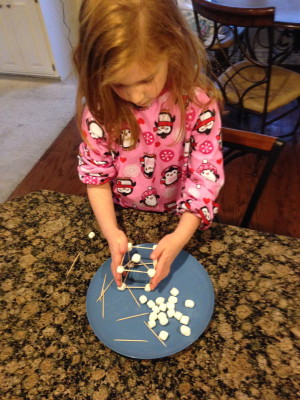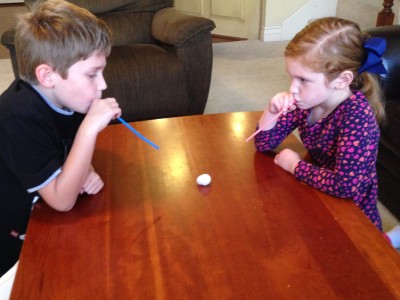Dear Melissa,
What are some calm, indoor, fine motor tasks that we can do over the long winter break or on snow days?
What are some calm, indoor, fine motor tasks that we can do over the long winter break or on snow days?
The frenzy of the holidays is over. Now it is time to enjoy time off before returning to school to begin a new semester. Whether at home on holiday break or anticipating the possibility of a snow day at home, this is a time of year when kids often have a little extra time on their hands. When we return to school, it’s amazing how kiddos will wake up super early when snow is predicted, just so they can impatiently watch the morning news, hoping and praying that their school’s name will flash on the bottom of the screen.
Snow season is upon us! Here in Arkansas, we don’t get much snow, but when we do see a couple of flakes, everything sure shuts down! I love to put a big fire in the fireplace and have the occasional warm, snuggly snowday with my kiddos. But after a movie or two, then what? Sure, board games, puzzles, and coloring books are all good ideas, but let’s be more creative than that! Here are several ideas for snow day activities for kids my own kiddos love (which is evident by their pictures below). Even better, the majority of the items required for these activities are super cheap, and are items that you are likely to have on hand if a snow day happens to catch you by surprise.
Snow Day Activities for Kids
- Create a band: Take old plastic bottles and either fill them with dried beans to make shakers, or tap on them like drums. And of course, instruments need to be decorated with your child’s own personal touches! Are your kiddos a bit older? See if they can make whistling sounds by blowing across the top of these bottles, too.
- Marshmallows/toothpick towers: Marshmallows and toothpicks can be even more fun than Legos! Have contests to see who can make the tallest, strongest, or most beautiful creations. This activity is super fun, and also provides a sweet snack!

- Newspaper snowball fight: Take old newspapers, wad each sheet into a ball and let the “snowballs” fly! These snowballs won’t freeze your nose and are generally safe for indoor use.
- Cotton ball hockey: You simply need 2 straws and a cotton ball. Have each child sit at opposite ends of the table and see who can blow the cotton ball to their opponent’s goal. We occupational therapists use activities such as this to improve calming and self regulation with deep breathing. It improves diaphragmatic support with controlled blowing to maneuver the cotton ball, improves ocular motor control by visually tracking the cotton ball, etc. My speech-language pathologist colleagues do this for lip rounding and breath support. Or you can play cotton ball hockey because it is just plain fun!
- Cookies: Ok, ok, this one is not that creative, but it IS tasty. Keep cookie mixes on hand or be a bit more adventurous and make them from scratch. Again, so many skills are addressed in one activity: reading, sequencing, measuring, fine motor (stirring, manipulating dough, placing cookies on sheet, decorating), sensory defensiveness (to the dough and ingredients), patience, safety awareness, and not to mention yummy-ness.
- Paper plate masks: Kiddos can create a variety of animals and characters with simple paper plates and crayons. Feeling a bit more creative? Use these characters to create your own play. Don’t worry, you have ALL day to work on it!
- Cardboard box creations: I NEVER simply throw away a card board box. I hoard them (probably to an unhealthy degree). I have even been known to nab particularly large boxes that clinic equipment has been shipped in. The possibilities are endless: houses, ice cream shops, rocket ships, caves, stages for puppet shows, and these are just a few of the things my own kiddos have created! One of my sweeties at the clinic even used her box to create a Rubiks Cube Halloween costume. Crayons, construction paper, box, glue…GO!
- Make your own board game: My son had this as a school assignment once, and we liked it so much that we have done it several times since. Not only does it enable creativity and empowerment on the front end, but then you also have a new board game to play the rest of the day.
- Clothes pin animals: I know not everyone has clothes pins laying around their house these days, but this activity is a favorite at the clinic. Simply draw the body of a creature on an index card. Then clip the clothespins to the cards to create arms, legs, tentacles, whatever appendages you choose!
- Paper airplane race: This one is a new favorite at my house. Folding paper can be surprisingly difficult for little hands. So much so, that it is tested on several of our occupational therapy standardized evaluations. Try out various designs. Does a paper clip on the nose of the airplane really help? What if you tried a staple instead? The possibilities are endless!
So… make that cup of hot cocoa, put a nice warm fire in the fireplace, and enjoy the cozy snow day. Do you have other snow day activities for kids that you like to do with your kiddos?
Please share at share@childrenstherapyteam.com.


































